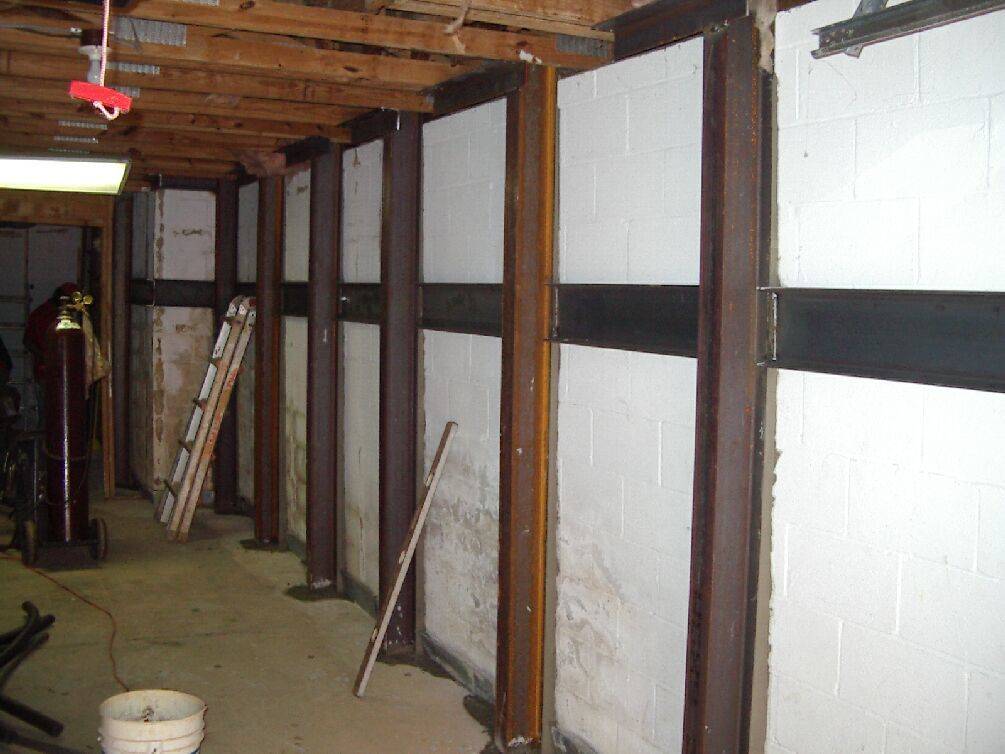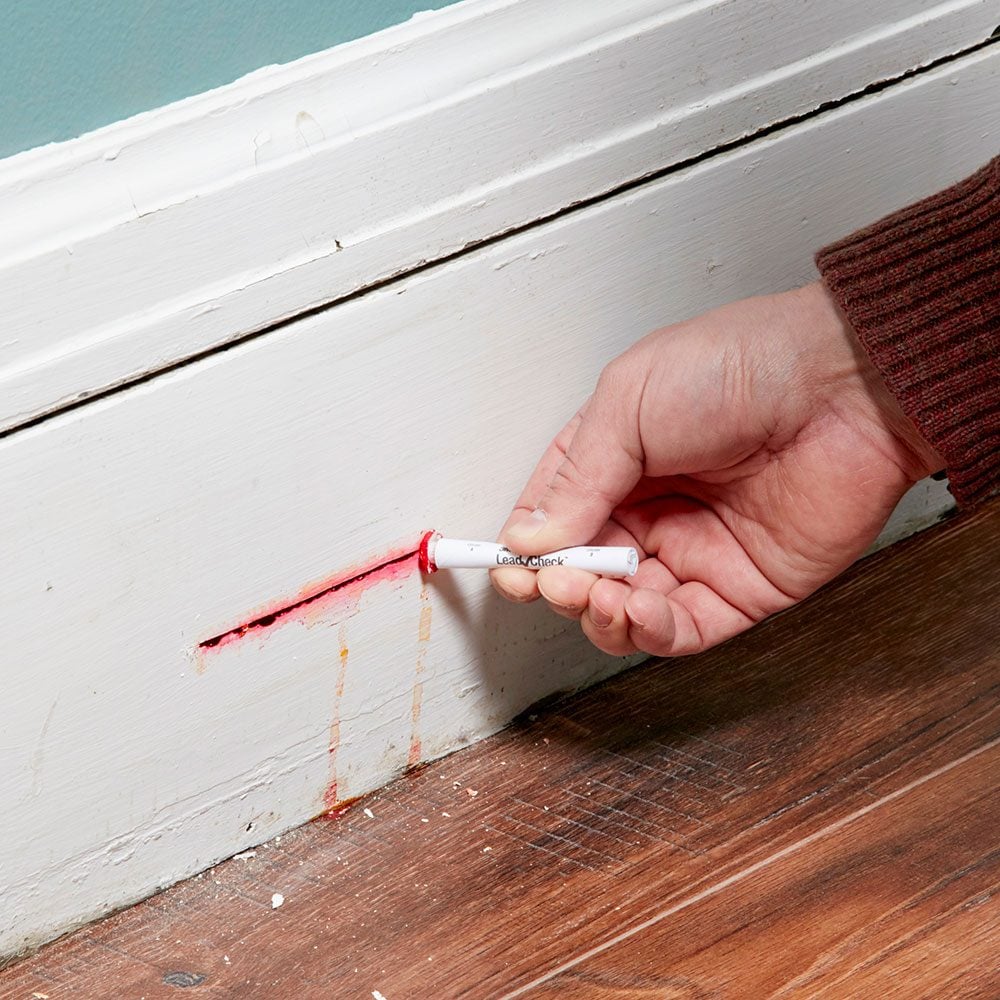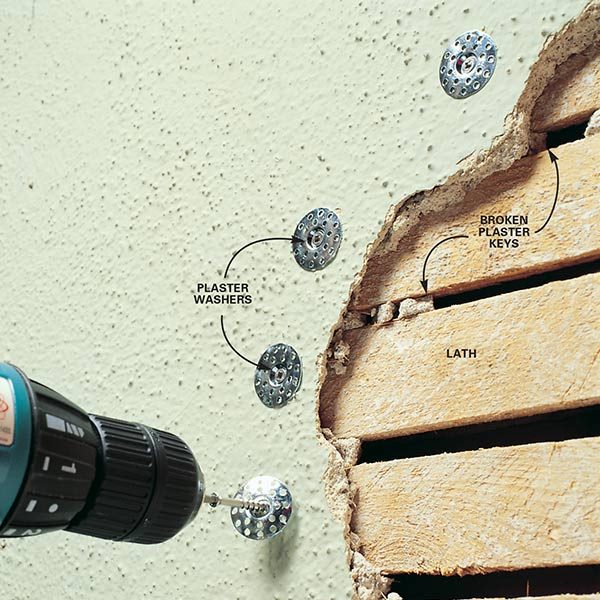The allure of an old home? Definitely the charm and character. Old homes were built to last, the materials are usually higher quality, and the handmade details just can’t be found in new developer builds. My husband and I have more than ten years of professional and personal experience in renovating old homes. We are not experts, but we are professionals, and I would love to share a few things we have learned from renovating old homes.
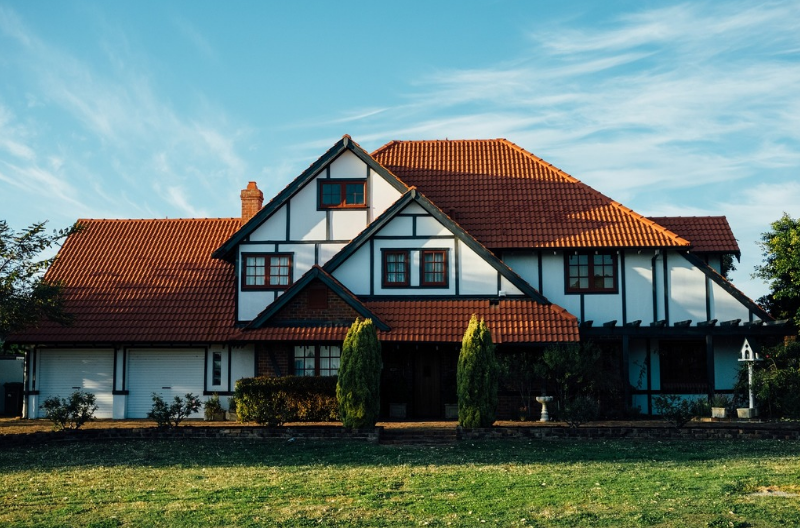
It’s often amazing how many people blindly purchase older homes without considering their “quirks.” The good news is: none of these things are deal breakers, and most are commonly found in old homes. Best of all: all of these issues can be fixed. So, please use this list as a starting point to become an educated buyer of an old home. and help you evaluate the right home price, set a realistic budget, and decide what level (if any) of diving into an old home renovation is for you.
1. Does the house have knob and tube wiring?
Knob and tube is the standard wiring found the houses built in 1880-1930s. The copper wire feeds through a porcelain cylinder like photo above.
The potential problems with knob and tube:
- The wiring can become poorly connected over time which can be a fire hazard. If you have this wiring, it is (at minimum) 80 years old so the possibility of poor connections is high.
- You cannot insulate your walls if you have knob and tube because it is a fire hazard (which also means your walls are not insulated.)
- Knob and tube wiring is not grounded.
- Knob and tube wiring was not meant to have many circuits. In 100 years, our electrical needs have changed a bit so modern homes have more outlets with more circuits.
- Bathrooms and kitchens with knob and tube can’t use GFCI outlets
- Most insurance companies won’t insure a home with knob and tube because of the fire hazard. We could not find anyone to insure our home until we replaced the knob and tube. Call your insurance company to find out their policy.
Other things to consider:
- Sometimes electricians don’t remove all the porcelain cylinders when updating the wiring. If you see the cylinders but there is no wiring feeding through them, the house might be updated. The unused porcelain cylinders are not dangerous at all.
- If a kitchen or bathroom has been renovated in an old home in the last 20-30 years they might have updated the wiring in just that space. Just because you see some modern outlets doesn’t mean it has all been updated.
- The seller might say “we have home insurance and our house has knob and tube”. That actually might be true because they bought an insurance plan before the insurance company changed their standards. In other words, they are grandfathered into a policy. Once the new homeowner moves into the old house and tries to get home insurance the insurance company will ask you to abide by the new standards.
Our Home:
Our entire house was wired with knob and tube and we rewired the entire house.
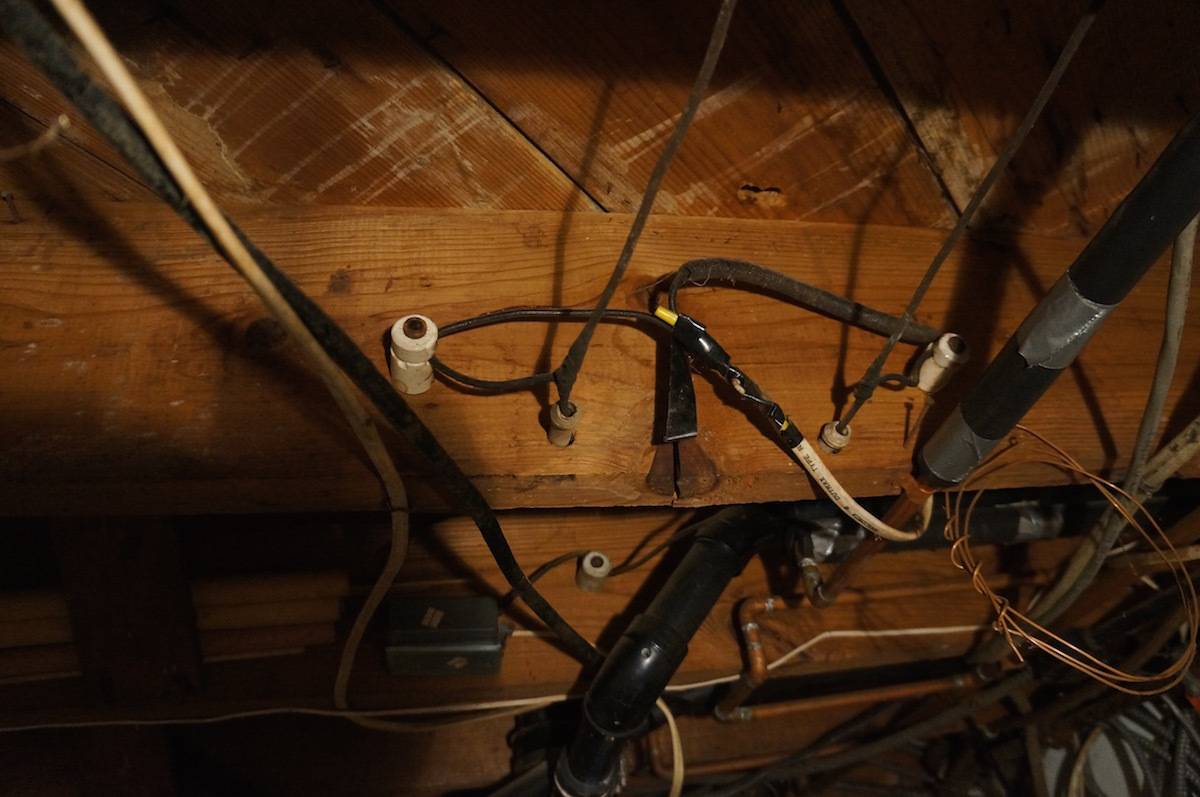
Here is a picture before we replaced the knob and tube. There was updated wiring from the kitchen renovation (done in the late 1970s) tied in with the knob and tube. YIKES! This all had to be replaced.
This is not a deal breaker in buying an old house. The cost depends on the size of the house. Before you go look for an old house you need to know it’s a “thing” with old houses and that (in my opinion) it is a “must do” in your renovation. Make sure your inspection gives you a detailed account of the wiring and have an electrical contractor come and give you a bid to replace the wiring in your house. Use this information to negotiate cost or determine if the house is worth making an offer.
Other costs to consider:
Adding more outlets: When you completely upgrade your entire home’s electrical system you might have the added cost of adding more outlets due to the electrical codes in your area.
Drywall or plaster repair: You don’t have to gut everything to rewire house but the electricians will poke holes in every wall so you will need to have drywall installer come and repair plaster or install drywall over the wall.
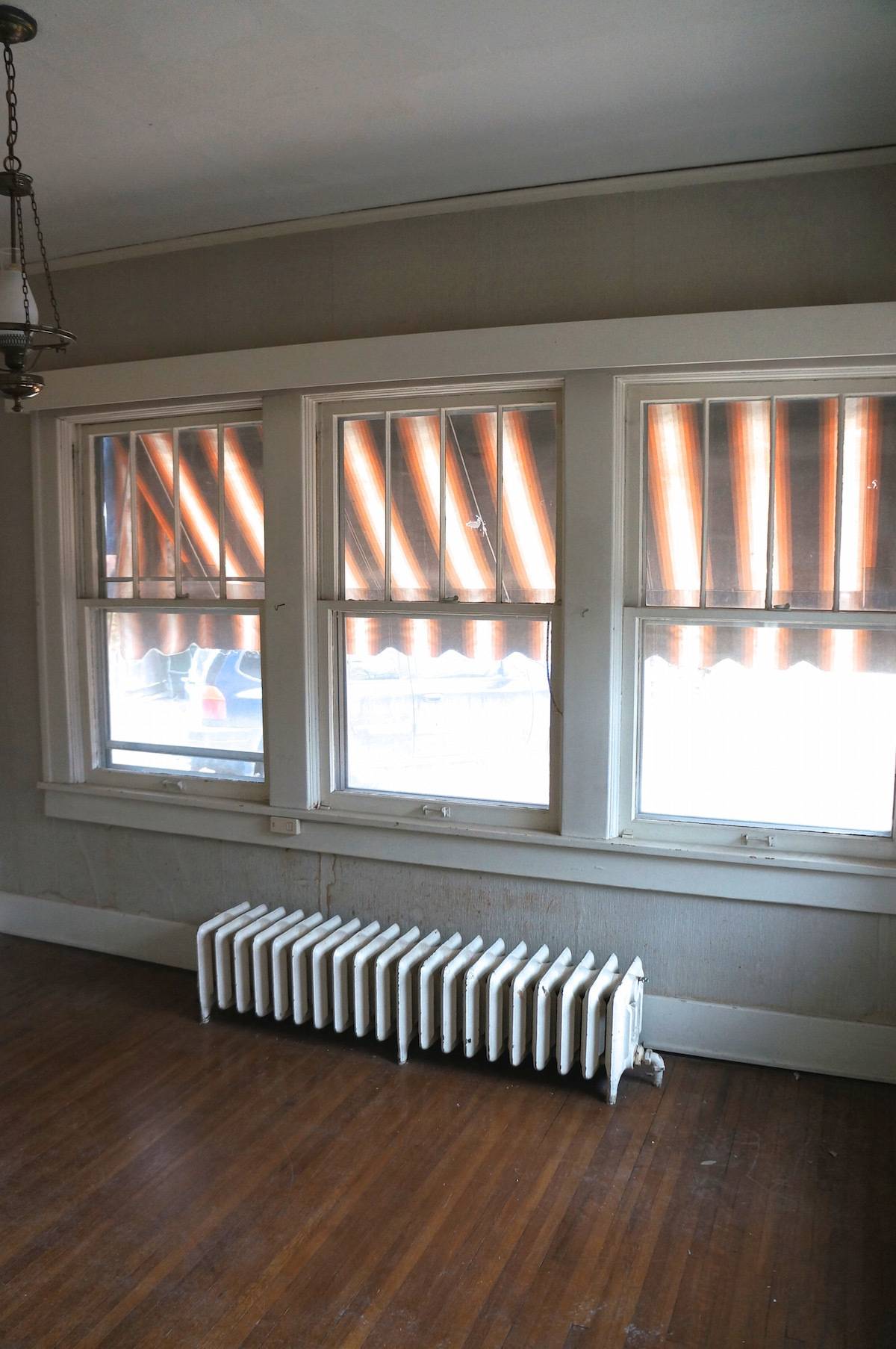
2. What is the condition of the windows?
Old windows have serious charm and character but they are very drafty, not mention being worn down and broken from 60-100+ years of use. This is actually NOT something that you have to replace. In fact, some old windows are irreplaceable in terms of detail and character. You just need to know when you buy an old house that you’ll have to give your windows more attention and loving care. You also need to know you will fight the battle of your home being colder in the winter and hotter in the summer.
Potential costs:
- Maintenance on windows as they wear out.
- Investment of good window treatments to help insulate old drafty windows.
- Replacing an entire house full of windows is pricey so if the windows are beyond repair, you need to consider the renovation costs as you decide on the right purchase price for the home.
Possible window fixes that help avoid entire house window replacement:
- Broken panes of glass: remove the window pane and take it to your local glass store for them to replace the glass. The cost is significantly less than a new window.
- Window won’t open or stay open: Pop off the trim to see if you need to retie the window weight to the window pulley system that opens and closes your window.
- Window is extremely drafty: Take the window pane to a glass store and have it re-glazed.
- Adding exterior storm windows: This can help an old window’s efficiency and durability. This is a chunk of change but nothing compared to replacing all new windows.
- Refreshing on old window’s paint: This can revitalize and old window, but proceed with caution; old windows are often painted with lead based paint. Educate yourself on how to do deal with lead based paint and evaluate the cost of that remediation. The good news is there are products out there that let you paint over lead based paint to seal the it in safely. (see #7)
- Interior window inserts: If you have beautiful historic windows that are extremely inefficient in the cold and heat, consider installing window inserts like these on the inside.
My Home:
Almost every single window in my old house was broken or unusable. We were able to have new windows made to fit the exact same profile of the originals. This was a cost we knew about before purchasing the home, and the home owner set the price knowing the windows needed help. We have spread the expense out over time by replacing windows as we renovate rooms. This way we can install them ourselves save even more money.
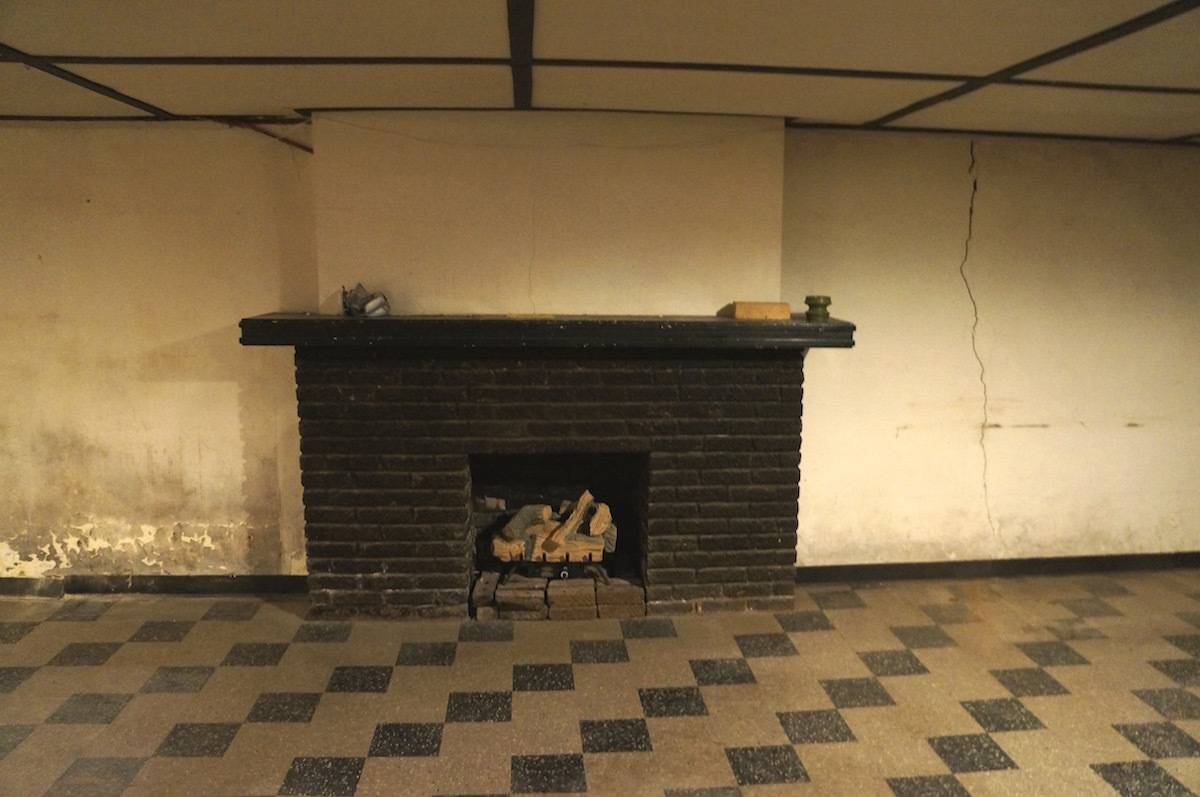
3. Does your foundation have vertical cracks?
Old homes often have foundation issues that needs to be addressed. When you are buying an old home, be sure to ask good questions about the basement foundation. The first thing you want to look for is significant vertical cracks.
Vertical cracks can be an indication that a foundation is sinking in a certain area. Other signs of a sinking foundation are sloped floors, sagging windows and doors, or exterior brick that needs tuck pointing. You might even see some cracking around windows and doors due to settling issues. Some cracks around windows and doors in old house are simply due to the plaster being old. The foundation walls are the most telling sign of what is going on in the old home foundation.
Potential Costs:
- The cost of a structural engineer to get the right plan to fix the problem.
- If severe, the cost of new footings to be placed underneath your home to keep it from sinking further
- If needed, the cost of lifting your house to make it level again which leads to fixing plaster/drywall or flooring after the repair.
- The cost of epoxy to fill the foundation crack to prevent water or air instrusion
Ask the seller for any documentation they have for foundation repairs that have been done. Most foundation contractors will guarantee their work for an allotted time (with documentation), and that guarantee usually will transfer to new owners. On another note, if you do the repairs make sure you take pictures and get documentation before you button up the wall. We have sold a couple of houses with documented foundation work that was done. Believe me, a documented foundation fix is a selling point.
Our home:
Our home had vertical cracks and horizontal. The largest vertical crack is seen in the before picture above.

The concrete parging spread over the actual foundation was hiding an even bigger crack. We hired a structural engineer to give us a plan and they dug into our basement foundation and installed 7 piers under the poured foundation. The good news is we were proactive about this problem so our floors were not badly sloped. So we decided we decided not to lift the house 1/16 of an inch. In our experience renovating old homes, the fixes for the problem of vertical cracks are much more expensive than fixing the problems causing horizontal cracks.
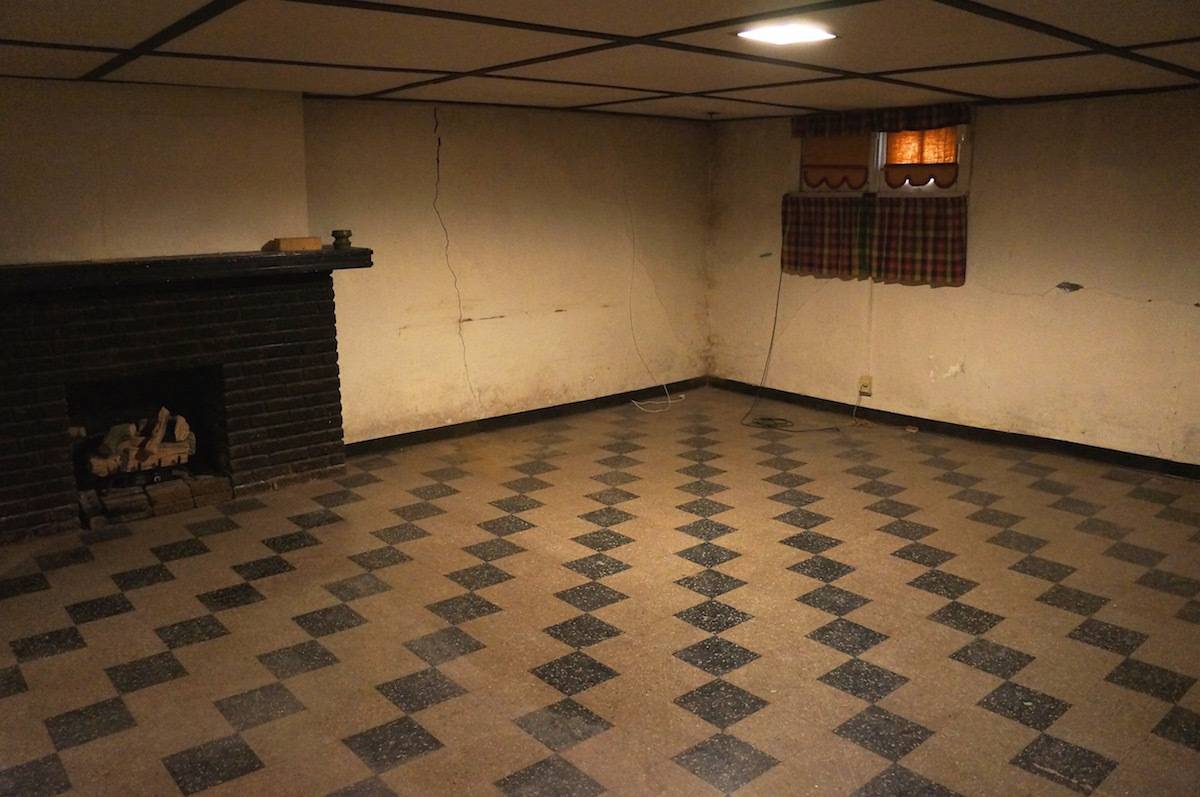
4. Does your foundation have horizontal cracks?
Horizontal cracks often mean that something is pushing against your foundation walls to make them cave in. If you just see a crack but the wall isn’t caving in you might have caught the issue before it becomes a bigger problem.
Potential fixes:
- Call a structural engineer or foundation company
- You will probably need to find out what is putting pressure on your walls to make them crack and eventually cave in.
- Trees and landscaping problems can be the root cause. Removing these issues is not a hard fix.
- Soil and lack of drainage can cause this problem as well. Grading out your lawn/landscaping away from the house or adding drains in your landscaping could help.
- After remediating the problem on the outside, you may need to install steel beams to keep your foundation wall secure.
Steel beams are common in an old home. If you see them don’t be alarmed, it’s actually a good thing. They mean the home owner has addressed some issues. Ask for the documentation or information on what was done. If you are nervous, hire a foundation company to come and check the work. The steel beams can be framed around and covered up with drywall so make sure you ask if they exist.
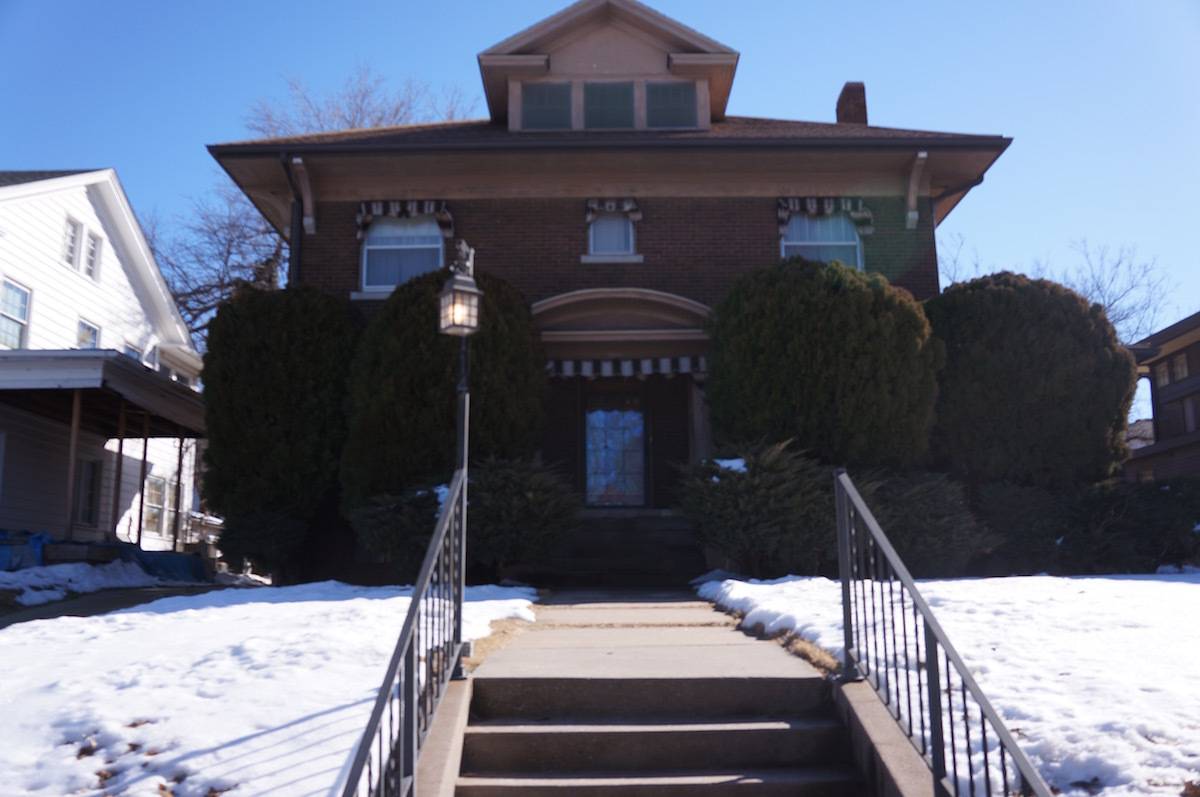
My home:
We had horizontal cracks. Can you guess from the picture above why?

The trees were removed but years of overgrowth had caused horizontal cracking that eventually will require steel reinforcement beams. Yes, that’s my son helping his dad measure the distance between the cracks to fill with epoxy for water tightness. Thankfully we haven’t seen any foundation caving…yet.
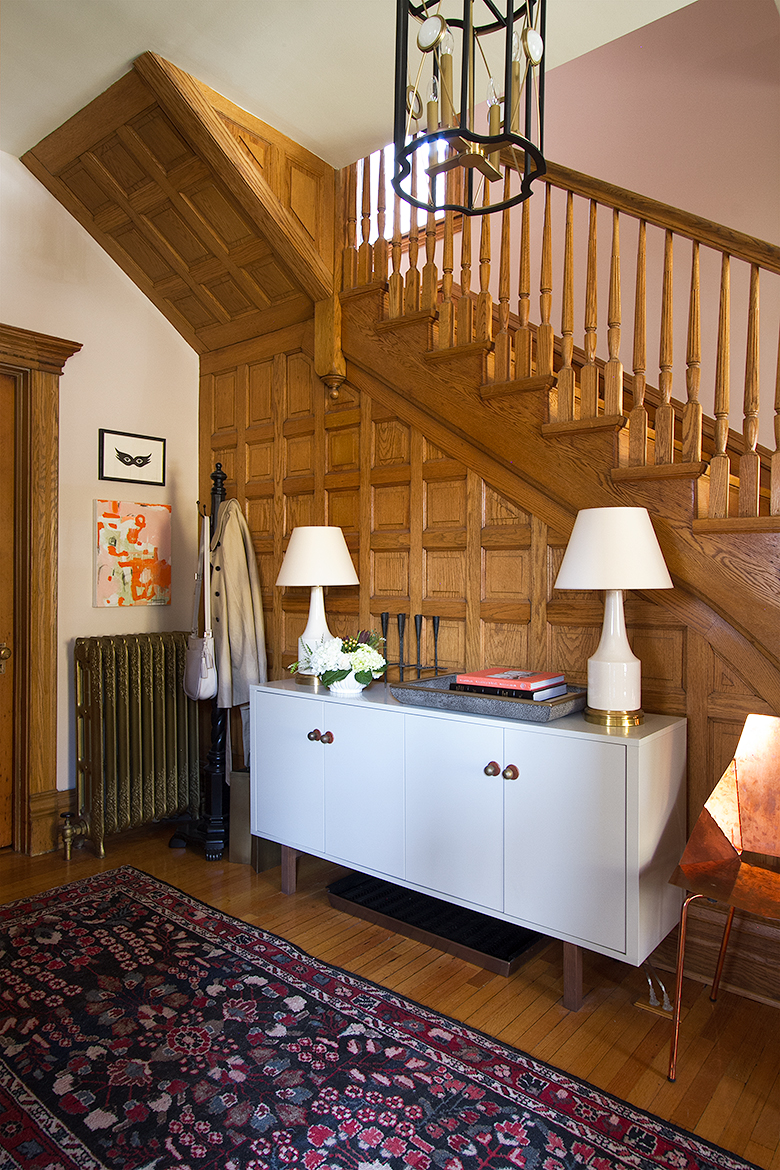
5. Does your house have central heat and air?
Many home buyers are lured in by the charm of an old house but are shocked when the house doesn’t have the latest modern conveniences for heat and air conditioning. Many old homes still are heated by radiators. Don’t be afraid of them! If they’re in good condition they can efficiently and safely heat a home. Through the years many old homes have been updated with central air, but some still only have window units.
Potential solutions:
- Installing duct work for central air is a costly, but in my opinion, it helps an old house make it another 100 years and will add value to your home.
- Ductless Mini Split systems are extremely efficient and a good option if you don’t want to tear up the walls in your home to install duct work. They are about the same price as installing duct work with a unit but can be installed without the cost of drywall/plaster repair.
- Well-placed window units work reasonably well and can be decorated around. My advice is to keep them out of windows on the front of your home.
This is all dependent on preference and where you home is located. In the central Midwest, we have 108 degree days in the summer so these homes need some form of air conditioning. You might live in an area where opening your window is the only air conditioning you’ll ever need.
How you heat and cool your home is all a matter of preference, so your solution will naturally reflect that. Make to work within your budget when considering the heating and cooling costs for a new home. But also take into account the implications for resale.

6. Does your house have old cast iron plumbing or drain pipes?
Extremely old cast iron plumbing has a tendency to rust from the inside, causing blockage and leaking of plumbing. Cast iron plumbing needs to be scoped by a professional plumber and maintained. Spot repairs are temporary fixes to a system that needs to be replaced. On the other hand, if the pipes have been well maintained they could be just fine. It’s important to have your inspector check for cast iron piping and report on its condition. If you have it, you’ll need to maintain it. My suggestion is when you do a bathroom or kitchen remodel, you should definitely spend the extra money to replace it.
My Home:
My home isn’t fully updated, so we continue to maintain the old pipes and check on them periodically. Our guest bathroom is original to the house, so when we renovate, we’ll change out the cast iron pipes there. We also know that we might have to change out the sewage pipe in our front yard if the ground shifts too much. We maintain it and have it checked yearly and it’s still in good condition so who knows, we may never have to.
7. Does your house have lead paint?
Lead paint should already be disclosed in the home’s real estate listing but make sure you ask the question and have the areas in question tested anyway. If your house was built before 1978 there is a good chance there is lead paint … unless its already been remediated.
Doors, trim, windows … these are the places where lead paint is likely. Our home was originally was built with dark dark ebony-stained wood trim and doors. That woodwork was painted over in the late 1980s, so it didn’t have lead paint. Our original windows and exterior paint, however, did have lead paint. That’s why we chose to replace the windows and hire out our exterior painting.
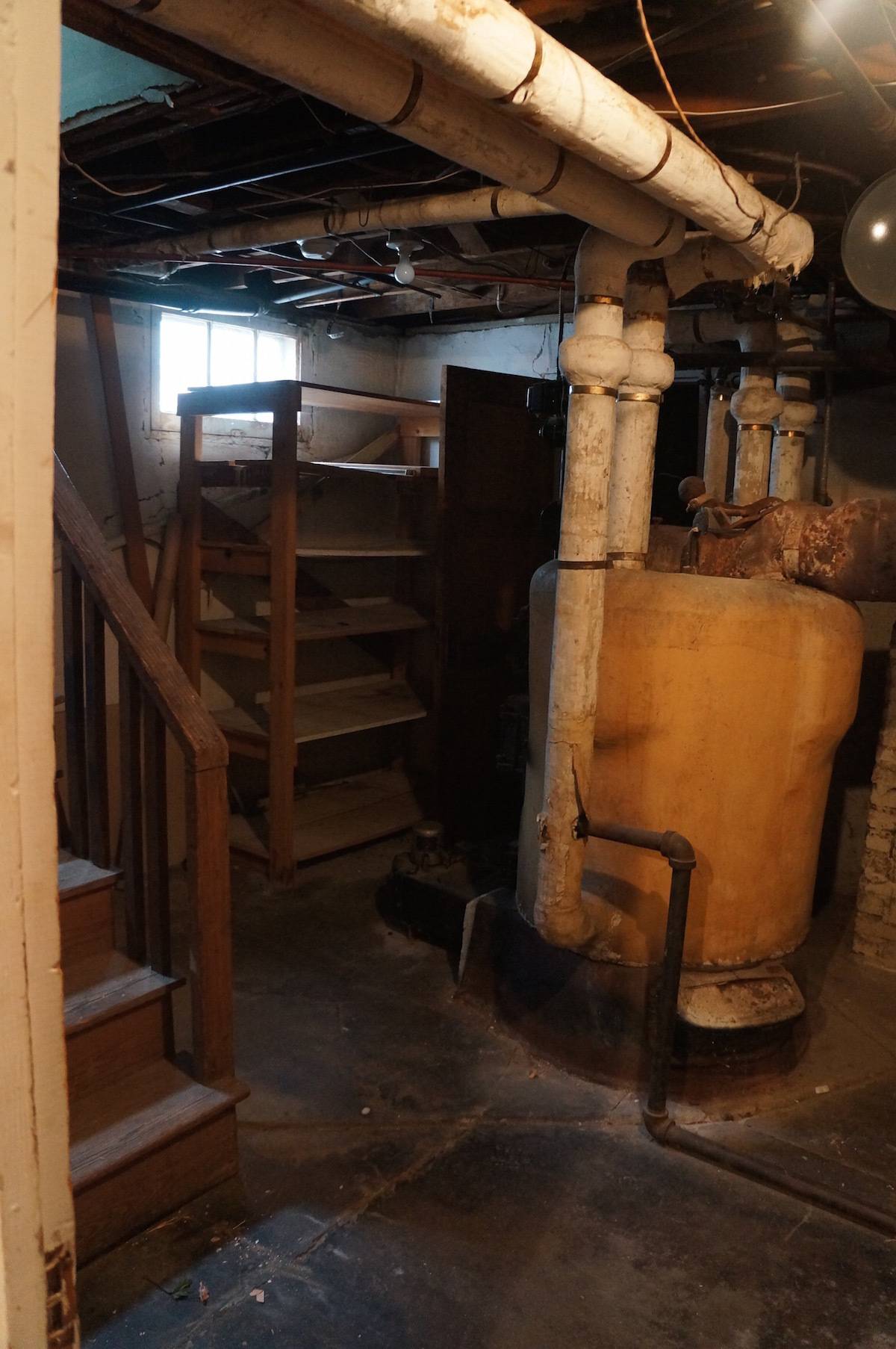
8. Are your pipes insulated with asbestos?
Older homes usually had pipes that were insulated with asbestos. This is something you should specifically ask the inspector about during your home inspection. Before you proceed with the purchase you can get a certified removal contractor to give you a quote. This is something you want to do before you move in and often can be negotiated in the contract to be removed by the seller … unless they are selling the house “as is”.
My Home:
The picture above is the boiler and the basement pipes covered in asbestos insulation.
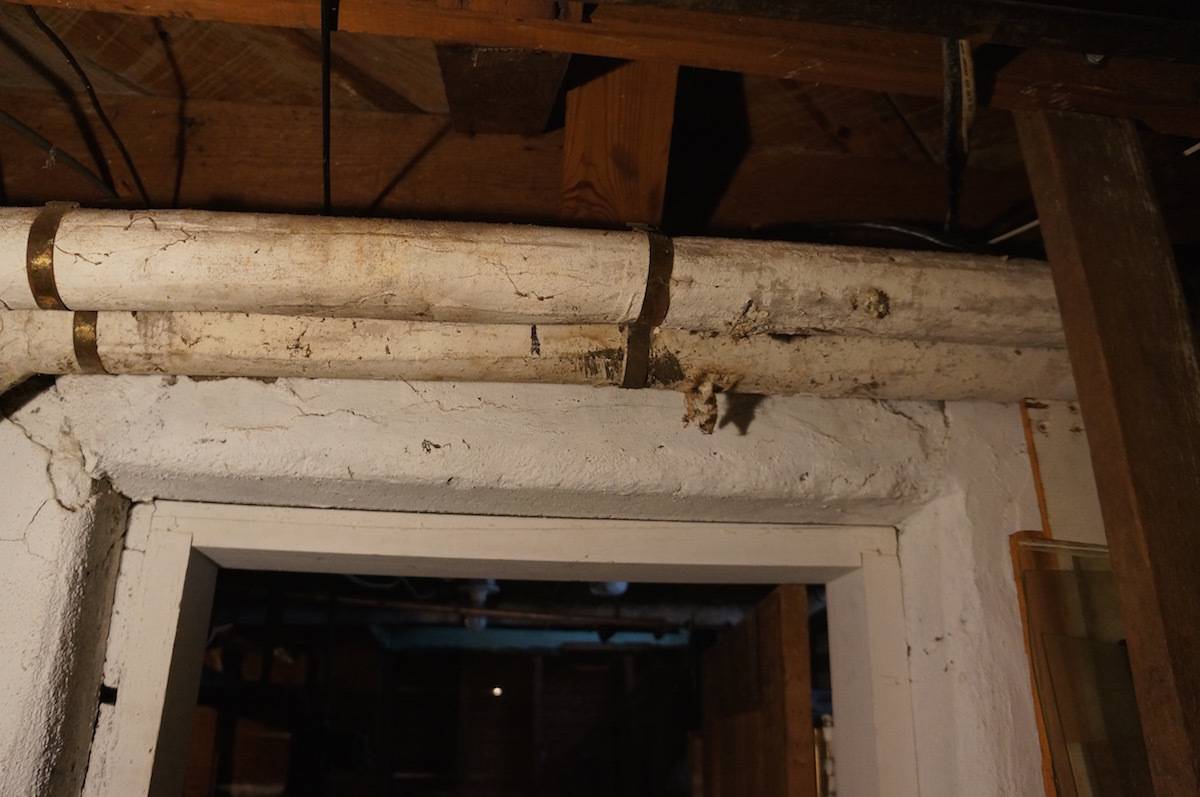
Here is closer view of what asbestos insulation looks like. We recognized it in our walk through and negotiated the price to remove it. We even put money aside for the possibility of it when we opened the walls. Luckily, when we opened the walls we were able to tell it was only in the basement.
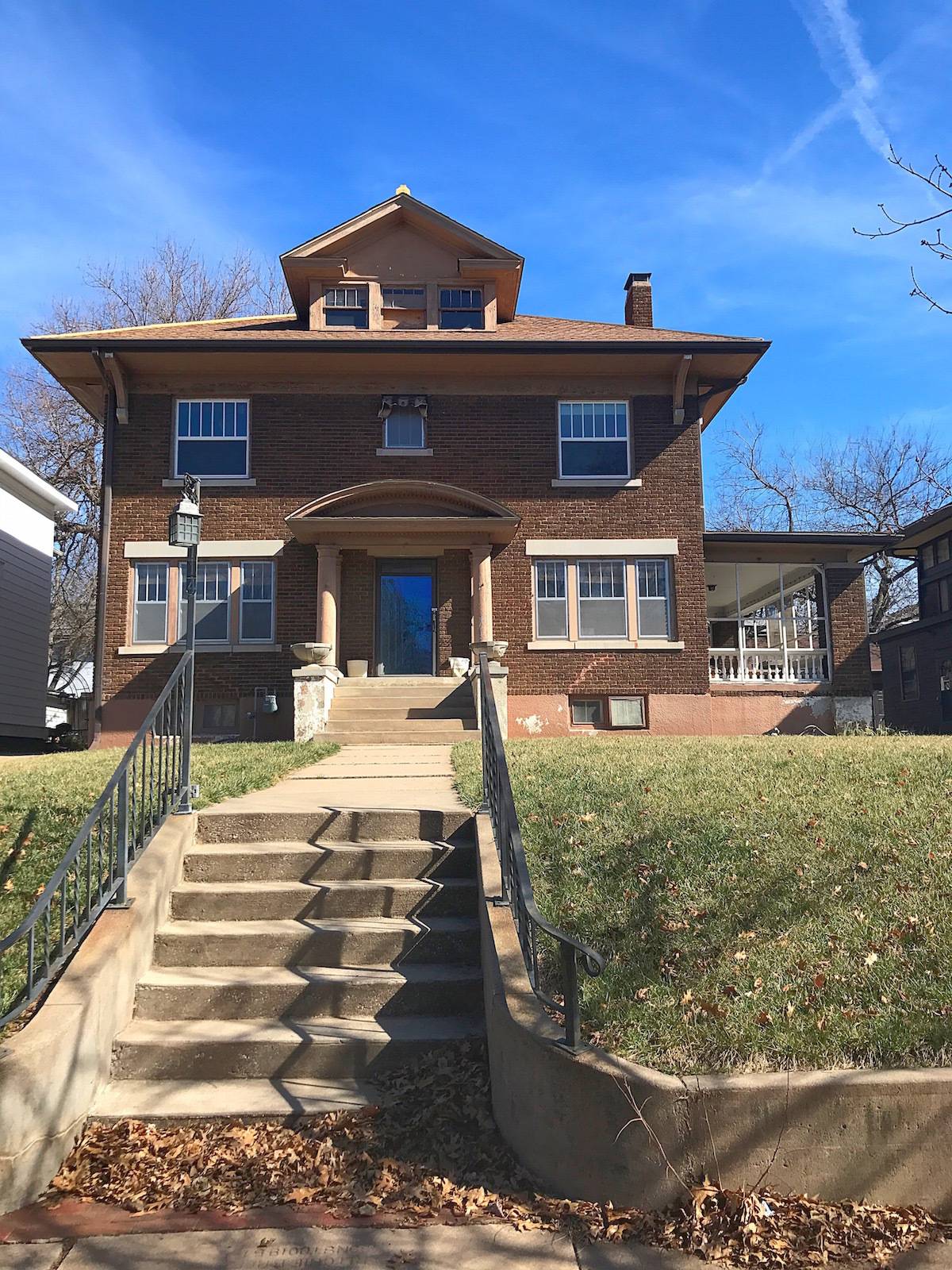
9. What’s the condition of the home’s exterior?
It’s always good to put your eyes on the exterior finishes of your house. Does it need painting? Does the brick need tuck pointing? (Bricks needing a lot of tuck pointing or stucco with considerable cracking are symptoms of foundation issues. See #3-4.) What’s the condition of the roof? If the house is still standing and regularly occupied, it has probably been maintained or updated at some point in time.
Here are a few good things to ask about when it comes to an old home’s exterior:
- First, simply understand the materials and elements of your exterior including the roof, even if it has been restored. Educated yourself about the cost and frequency to maintain its integrity. For example, cedar shake siding is beautiful but needs regular maintenance.
- Evaluate the condition of your exterior.
- Look for updates or fixes that have been done.
- Look for potential problems that can indicate other hidden issues
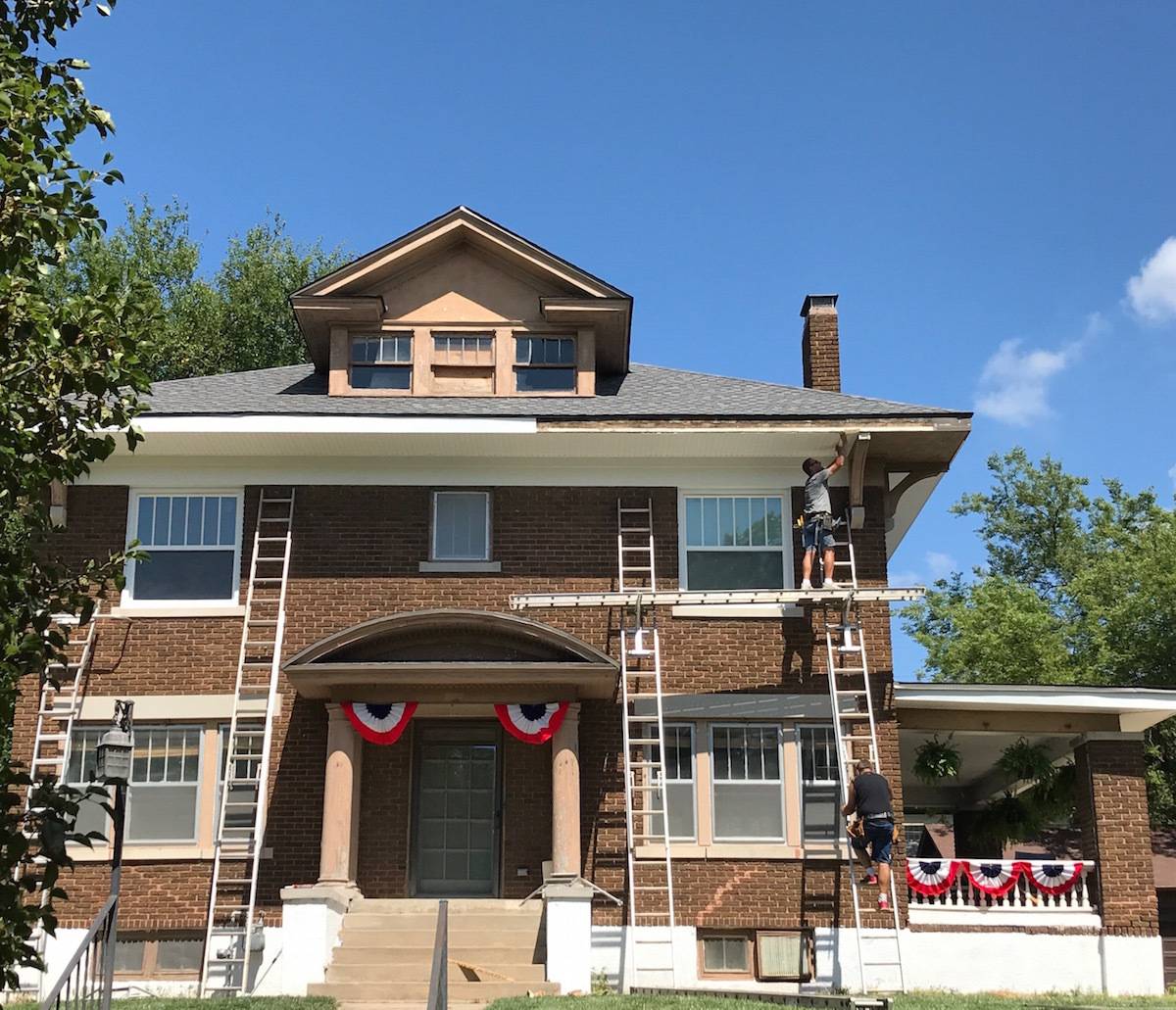
My home:
The brick is in excellent condition but every surface of trim needed a little refresh which is happening as I write this post. We also replaced the roof, but only because of hail damage (insurance paid for it).
10. Does your house have original plaster?
This question might be kind of controversial. Some old house purist reading this might disagree, but here is why my experience leads me to believe you should at least ask this question.
Lathe and plaster were used in homes to finish walls until the late 1950s when drywall began to be the standard material. Original plaster means the walls have not been opened up in at least 50 years, depending on when the house was built. Like I said above, the wiring of your home can be replaced without removing the walls but if you have original plaster (new wiring or not) you probably don’t have (much/any) insulation in your walls. The exception is if at some point in time the homeowner drilled holes in the walls and blew in insulation. This would be something you would want to know. If your plaster walls were insulated this way you definitely need to make sure the wiring was updated or you might have a bigger problem (see #1).
If your walls are in excellent condition you don’t have to replace them to safely live in the house, you just need to understand what comes with keeping up plaster walls. You can cut holes for blown-in insulation, but it’s hard to reliably know how much of the wall is insulated. You also need to understand that hanging pictures and maintaining the walls are a little different than when working with drywall. It’s a preference of where you want to spend your money and what you like in a comfortable home.
Here is why we will remove every bit of plaster from our old home:
- Overtime, lath plaster will crack and fall inside the walls. As you patch the cracks, there is no way of fixing the issue from the inside. This can affect the efficiency of the insulation in the wall. In fact, we have beautiful pocket doors between our living room and dining room that we cannot open because so much plaster has fallen behind the tracks through the years.
- We realize while there are purists out there, but the majority of the people who might be interested in buying our home (when we sell) won’t want to deal with things they don’t understand or are not used to. If I want this old house to appeal to buyers in 15-20 years, I feel it’s my job to keep it up to speed with modern building materials as best as I can.
- Most importantly it is good to see what is going on behind the walls of a home that has had the same walls for 100+ years.
11. Is the outside of your house protecting the inside of your house?
In other words, is your landscaping sloped and graded away from your house in away that directs water away from the house. What are the condition of your gutters? What is the condition of your roof?
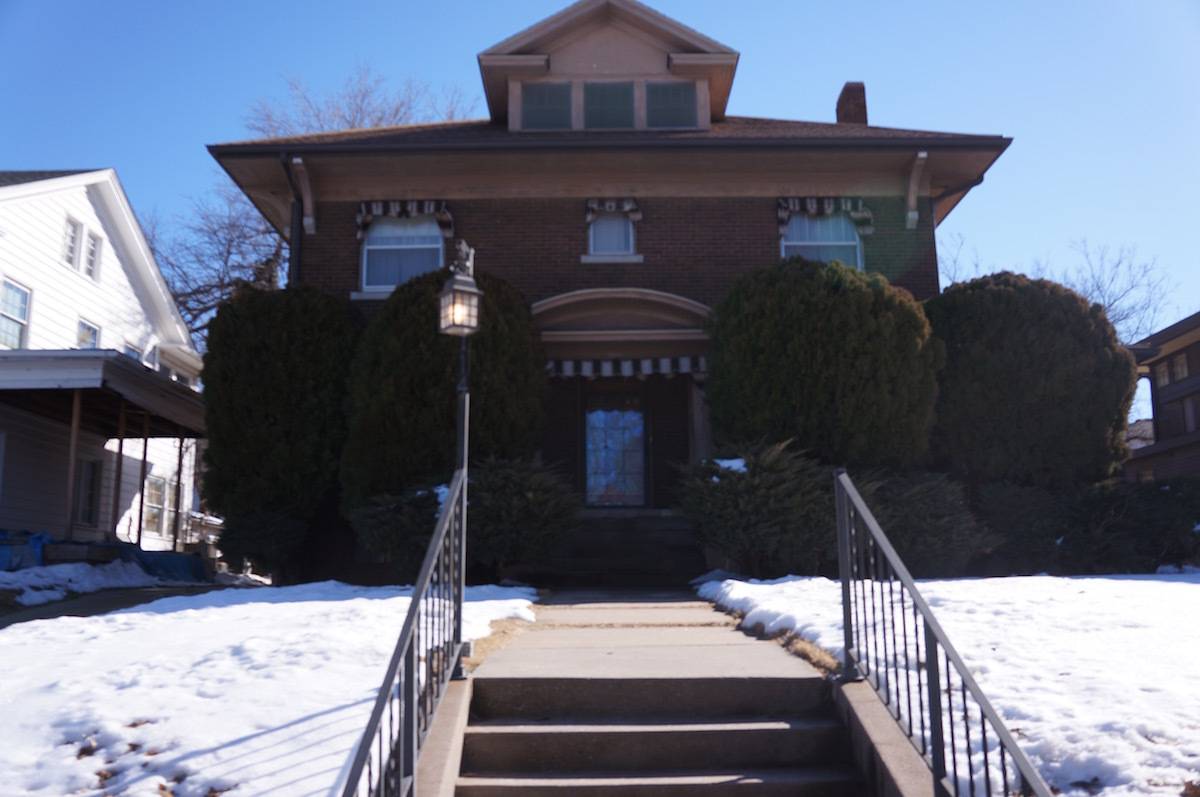
My home:
Most houses are not as bad as my house was but we knew immediately these large overgrown bushes were not protecting the inside of our house and foundation. This is our biggest problem. We will soon be grading out our yard to help water slope away from our house. Even homes that are 10 years old often need a little help in this regard.
12. What do the surrounding (old) homes look like?
You might be gung ho about diving into fully restoring an old house, but first you need to see if others in neighborhood have also been motivated to do so. If you are reading this post, you’re probably not a real estate investor who’s committed to restoring houses in old neighborhoods. If you’re looking to buy a home that you will occupy and one day sell, then it’s important to know whether the neighborhood will support a renovation. This is just a reminder to be mindful of the location of your home, and wisely decide how you’ll invest money. It’s best to choose an old house in a neighborhood that’s trending toward revival or is established and has a good mixture of renovated and nice (yet not renovated) homes. If you don’t know what decor style fits you, try one of these eight interior design style quizzes.
My neighborhood is not on it but the article can be a great resource of types of old homes you love.
My Home:
We took on all these renovations first and foremost because we love the work and have experience doing it. We would not just take on any house in this condition. Our neighborhood is old and established, where many people would like to live. Local business are vibrant and homes are well-maintained and renovated. There were six offers on our house through the estate sale and we even had two people knock on the door to see if the house was for sale when we started renovating. Getting sales data from your local real estate agent and understanding the pulse of your city/town can help.
13. What is your renovation capacity?
After reading through this list you might think “I can never own an old home” … that’s not true! This list is written to help you make an educated purchase. There are plenty of people who have thoughtfully restored or updated their old homes with character alongside modern conveniences. If you’re looking at that type of house, use this list to make sure the improvements were done well. On the other hand, this list can also help you find the right old home that’s ready for you to fix it up!
My home:
We love restoring old things to new. It’s a passion of ours, yet there are some days even I get overwhelmed. Renovation burnout is normal and natural, even for people who do it everyday. We have a calculated plan to execute our renovation slowly over 5-7 years. It’s fun and hard but we know our limitations and know what we like to do and what we don’t. Than being said, I don’t suggest fully renovating an old home until you have lived in and understood what’s its like to make updates a newer home.
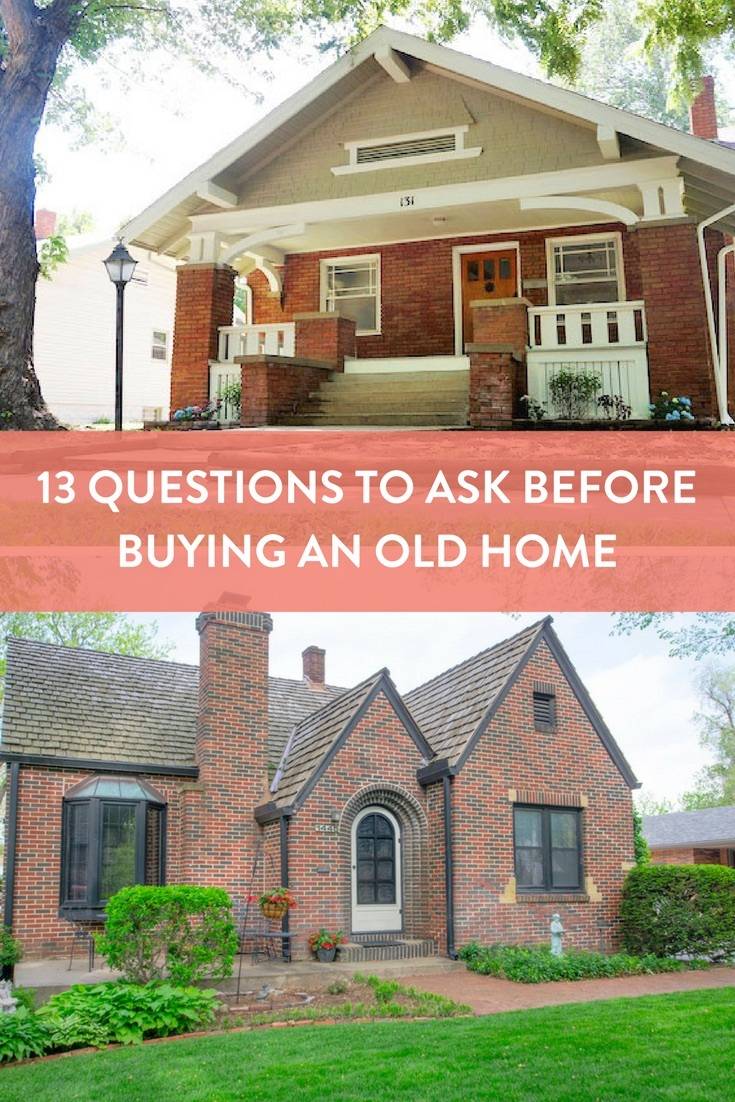
I hope this list helps you find the right old home for you!


